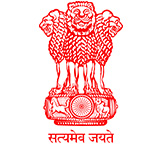Guidance Note on "Follow up audit"
Reference No. 48 / 40-PPG/2012 Dated: 25th February 2015
The Performance Audit Guidelines, 2014 provide guidance on the follow-up procedures in a comprehensive manner. Performance audit reports are essentially a means to improving public sector performance and accountability. This can be achieved through implementation of the recommendations contained in the performance audits. Consistent and systematic follow-up process by the Department will contribute significantly to the effectiveness of performance audit in improving the programme implementation.
2. Follow-up audit refers to the situation where the auditor examines the corrective actions the audited entity, or any other responsible party, has taken on the basis of the results of previous performance audits. It is an independent activity that increases the value of the audit process by studying the impact of the audit. It also has the effect of improving future audit work. It encourages the user of the reports and the audited entities to take the audit reports seriously and provides useful performance indicators for the auditors.
3. Bullet 2 Paragraph 8.3 of the Performance audit Guidelines state:
"In cases of the performance audits that are not selected for detailed examination, Accountants General will carry out follow-up procedures to examine the extent of the implementation of the recommendations, particularly those which had been accepted by the entity."
4. To implement the above requirement, the following instructions may be observed.
A. Selection of topics for follow-up audit
4.1 At least one follow-up audit may be taken up for each State Government and included in the annual audit plan. In case of Union Government, one follow-up audit may be taken up in each sector. Selection of topic should be based on the following criteria:
- Performance audits which have not been not selected by PAC/COPU and are not expected to be picked up for examination in near future should be considered for selection.
- Audits conducted at least 3 years ago should be considered, as sufficient time should be available to the audited entities to implement the recommendations.
- Follow-up audits should be taken of such performance audits where the audited entity has accepted recommendations given by Audit.
4.2 While selecting a follow-up, the Accountant General should consider the following questions:
- Has the initial issue identified in the earlier audit evolved with time?
- To what extent the changes have altered the risks associated with issue raised in the original report?
4.3 The focus should be to determine the progress achieved in resolving the issues originally identified. However, issues may evolve with time, and focusing strictly on recommendations may miss a new concern, as the recommendations may not be fully relevant to new circumstances or the evolution of the issue. These concerns should be kept in mind while planning and conducting the audit as well at the time of reporting audit findings.
B. Audit Scope and Methodology
4.4 The main objective of conducting a follow-up audit is to assess the progress the audited entity has made toward implementing recommendations of a previous performance audit. A follow-up should not merely be restricted to checking whether the recommendations have been implemented but should focus on whether the audited entity has adequately addressed the problem and remedied the underlying conditions. The auditor should adopt an unbiased and independent approach.
4.5 Follow-up audit should be initiated as a desk review. A well-structured questionnaire could be issued to the audited entity and those charged with governance of the audited entity to elicit an update on the status of the action taken to implement the recommendations from earlier audits. The request should include the following questions:
- What action plan or strategy has been drawn by audited entities to implement the accepted recommendations?
- What efforts have been made to implement the action plan or strategy?
- How well are these efforts progressing?
4.6 Depending upon the responses received, field audit may be undertaken to validate the action reported by the audited entity. The extent of field audit to be undertaken would be decided after the responses are analysed. Audit parties may also be deputed to collect the responses of the audited entities. Interviews of the responsible officers from audited entities can also be taken as the evidence for this purpose.
4.7 Ideally, the original audit team members should carry out the follow-up, but this may not always be possible because of conflicting scheduling needs or other reasons. However, it is important to ensure that team members assigned to the audit follow-up have the appropriate understanding of the subject matter of the audit. A session at the initiation of the follow-up for a comprehensive briefing or orientation to transfer the knowledge from the original audit team should be organized, if possible.
C Audit findings
4.8 The status of implementation of accepted recommendations can fall in following categories:
- Insignificant or No progress - assurance without concrete plans is regarded as insignificant progress.
- Substantial implementation - Structure and processes are in place and integrated in some parts of the organization, and some achieved results have been identified.
- Full implementation - Structures and processes are operating as intended and implemented fully in all intended areas of the organization.
4.9 At the end of the follow-up, the audit team should present and discuss the results with the audited entity and prepare a report.
D Reporting the results of audit
4.10 The follow-up audit should result in a report that provides an assessment of the adequacy of the corrective action taken to resolve previously reported issues. The report should not normally repeat recommendations from the previous report. Also, if there are observations and conclusions on new issues, the audit team may make “new” recommendations to address them.
4.11 The decision of presenting the follow-up report to the legislature would be taken depending upon the significance of the audit results. The results of audit could be presented as a chapter in the Audit Report or appear as a para in the relevant chapter. Sometimes the audit team identifies issues that are important enough to be brought to the attention of entity management but not necessarily to the attention of the legislature. This may be done through a management letter, a presentation or at a meeting.
4.12 While conducting audit follow-up, the audit team may find that the issues have evolved and need to be redefined. New issues may also be identified and judged from a risk perspective. In such a scenario, the key issues should be identified for considering a fresh audit.
Important Communications
Legal Opinions
|







